Step Up Your Style Game with Chic Indo-Western Dresses


Makar Sankranti, a significant festival in India, is celebrated to mark the transition of the sun into the zodiac sign of Capricorn. On this important day that holds a special place in our calendar, people all over the country celebrate with excitement and enthusiasm. The festival, known by various names in different regions, holds cultural and historical significance and is celebrated with diverse traditions.
Festive Kaleidoscope: Makar Sankranti’s Cultural Symphony Across India

Makar Sankranti is celebrated with diverse traditions across India, each state bringing its unique charm to the festivities.
In Punjab, it’s celebrated as Lohri, marked by bonfires and vibrant folk dances. People wear colorful Phulkari designer suits, celebrating with bhangra and gidda.
In Gujarat, Uttarayan is celebrated with kite flying, and women adorn themselves in vibrant chaniya cholis.
In Tamil Nadu, signifies the culmination of the harvest season with families coming together to cook the traditional dish ‘Pongal’ and express gratitude for abundance. Pongal involves traditional attire like Pattu Pavadai for women and Veshti for men.
Assam celebrates Magh Bihu, known for community feasts, traditional dances like Bihu, and lighting of Mejis (bonfires). Women wear traditional Assamese attire, the Mekhela Chador, characterized by elegant silk or cotton drapes, while men don Gamosas, traditional handwoven scarves.
These celebrations showcase India’s cultural diversity through distinctive outfits and rituals during Makar Sankranti.
Why is Makar Sankranti Celebrated?
Solar Transition Celebration:
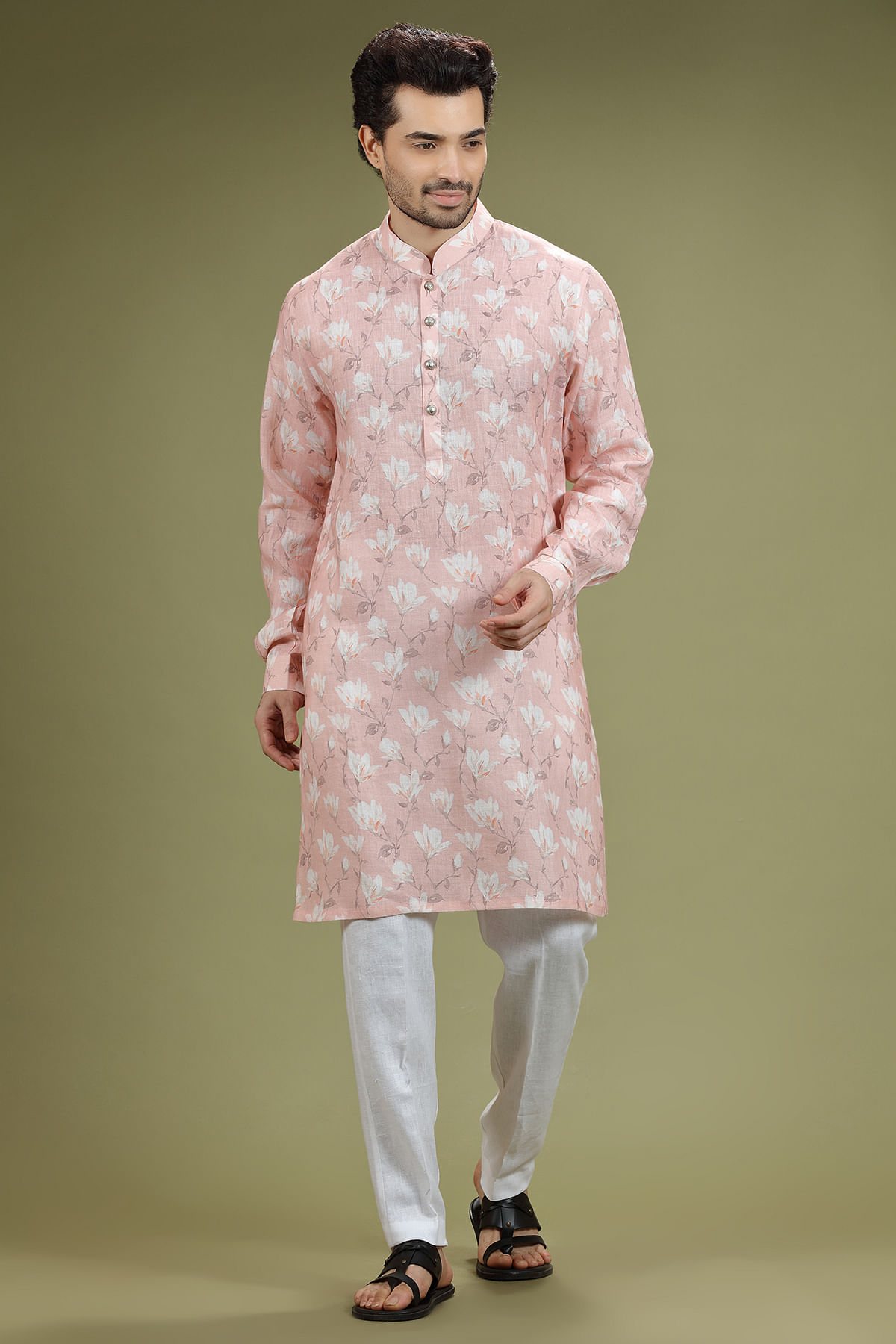
Makar Sankranti marks the end of the winter solstice and the beginning of longer days. As the sun starts its northward journey, symbolizing the arrival of warmer days, the festival signifies the triumph of light over darkness. The word “Makar” refers to the zodiac sign Capricorn, and “Sankranti” signifies the sun’s transition.
Cultural and Harvest Celebrations:
The festival is also closely linked to agrarian traditions, marking the onset of the harvest season. Farmers express gratitude for the bountiful crops and pray for a prosperous agricultural year ahead. The festival fosters a sense of community as people come together to celebrate the abundance of nature.
History of Makar Sankranti:
Ancient Roots:
Makar Sankranti has ancient roots and finds mention in various Hindu scriptures. It is believed that the celebration has been observed for thousands of years, dating back to the Vedic period. The festival is not only a time for religious observances but also a way to celebrate the cyclical nature of the sun and its impact on agriculture.
Religious Significance:
In Hindu mythology, the day of Makar Sankranti is associated with significant events. It is believed that on this day, Lord Surya (the Sun God) visits the house of his son Shani (Saturn), signifying the end of their differences. Devotees take holy dips in rivers and visit temples to offer prayers, seeking blessings for prosperity and well-being.
Special Food During Makar Sankranti:
Sesame and Jaggery Delicacies:
One of the hallmark features of Makar Sankranti is the consumption of sesame and jaggery-based sweets. Til ladoos (sesame seed sweet balls) and gur (jaggery) are often used to prepare various traditional delicacies like til chikki, gajak, and rewri. These foods are not only delicious but also hold nutritional significance, providing warmth during the winter season.
Pongal in South India:
In South India, particularly in Tamil Nadu, the festival is celebrated as Pongal. The signature dish, also called Pongal, is a special rice dish cooked with newly harvested rice, lentils, and jaggery. The act of boiling over of milk during the cooking process is considered auspicious and symbolizes abundance.
Kite Flying Tradition:
Symbolism and Tradition:
One of the most cherished traditions during Makar Sankranti is kite flying. The sky becomes a canvas for colorful kites, creating a breathtaking spectacle. The tradition of flying kites symbolizes breaking free from the past and soaring high with new aspirations. It is believed that the higher the kite flies, the closer it gets to the divine.
Kite Festivals:
Across India, various states organize kite festivals during Makar Sankranti, attracting participants from all walks of life. Cities like Ahmedabad in Gujarat are particularly renowned for their International Kite Festival, where the sky is adorned with kites of all shapes, sizes, and colors. These festivals promote community spirit and friendly competition among participants.
The Allure of Tradition:
Beyond the religious and cultural significance, this festival also provides a unique opportunity to showcase and celebrate India’s diverse fashion heritage. In recent times, the fusion of tradition and modernity has given rise to a trend that blends not only the classic charm of Sarees and Lehengas but also the ethnic allure of designer salwar suits and men’s designer kurtas, creating a fashion statement that resonates with the spirit of Makar Sankranti.
Saree Swagger:
Modern Drapes:
The saree, a timeless piece of clothing, has undergone a remarkable transformation in recent times. Traditionally associated with grace and elegance, the saree has now become a symbol of empowerment and style. The trend of ‘Sari Swagger’ encapsulates the fusion of tradition and modernity, as young individuals experiment with drapes, fabrics, and accessories to redefine the saree’s narrative.
Contemporary Draping Styles:
Traditional designer saree drapes like the Nivi style or the Bengali drape are being reinvented with modern twists. Experimental pleats, quirky twists, and unconventional pallu placements have become a common sight, allowing wearers to express their creativity and individuality.
Fabric Innovation:
The traditional silk sarees are making way for lightweight fabrics like georgette, chiffon, and organza. These fabrics not only enhance comfort but also provide a fresh and breezy look. Handloom sarees from different states are gaining popularity, promoting the rich craftsmanship of Indian weavers.
 Coconut Milk Beige Pearl Embroidered Net Saree-SR27365
Coconut Milk Beige Pearl Embroidered Net Saree-SR27365‘Sari Swagger’ is all about blending cultural influences. The fusion of designer fancy sarees with contemporary designer silk blouses, jackets, or even belts is becoming increasingly common. This blend of traditional and modern elements reflects a dynamic and evolving cultural identity.
The blouse, once a modest accompaniment to the saree, has now become a canvas for artistic expression. Elaborate embroidery, intricate patterns, and bold designs transform the blouse into a statement piece that complements the elegance of the saree.
Traditional jewellery is being reimagined with a modern twist. Kundan, Polki, and temple jewellery are now paired with contemporary designs to create a fusion that effortlessly combines the old and the new.
The choice of footwear plays a crucial role in completing the ‘Sari Swagger’ look. While traditional juttis and mojaris are timeless, contemporary styles like embellished sandals and block heels are gaining popularity, adding a modern edge to the overall appearance.
Lehenga Love:
Experimenting with Silhouettes:
Lehengas, traditionally associated with weddings and special occasions, are now finding a place in the wardrobes of fashion-conscious women for festive events like Sankranti. The ‘Lehenga Love’ trend focuses on experimenting with traditional silhouettes.
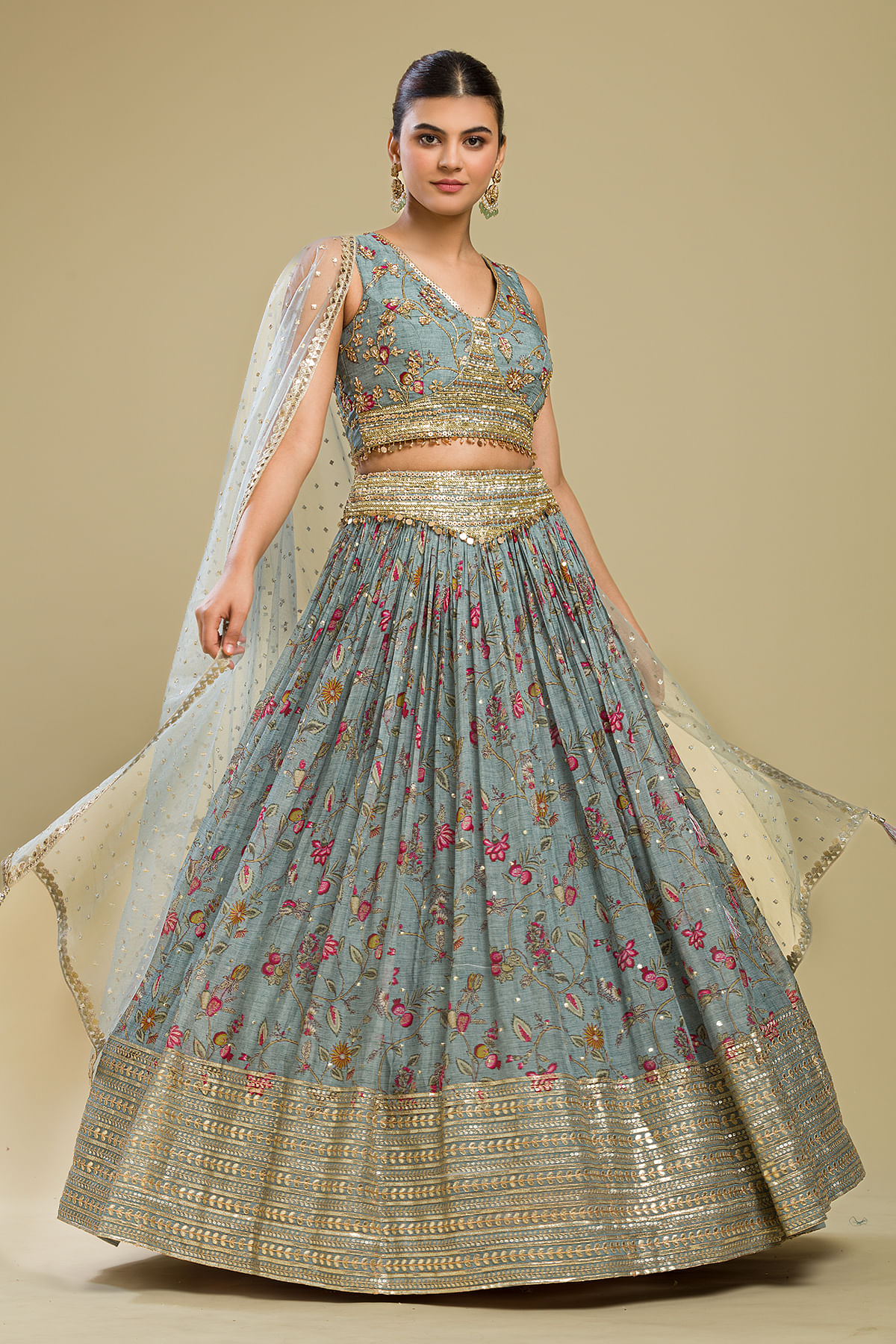 Blue-Grey Printed Organza Designer Lehenga-GC4481
Blue-Grey Printed Organza Designer Lehenga-GC4481
Designer Lehengas are no longer confined to the traditional A-line or flared silhouette. Contemporary designers are experimenting with asymmetrical cuts, mermaid styles, party wear designer lehenga and designer silk jacket lehengas. This experimentation adds a modern touch to the traditional ensemble.
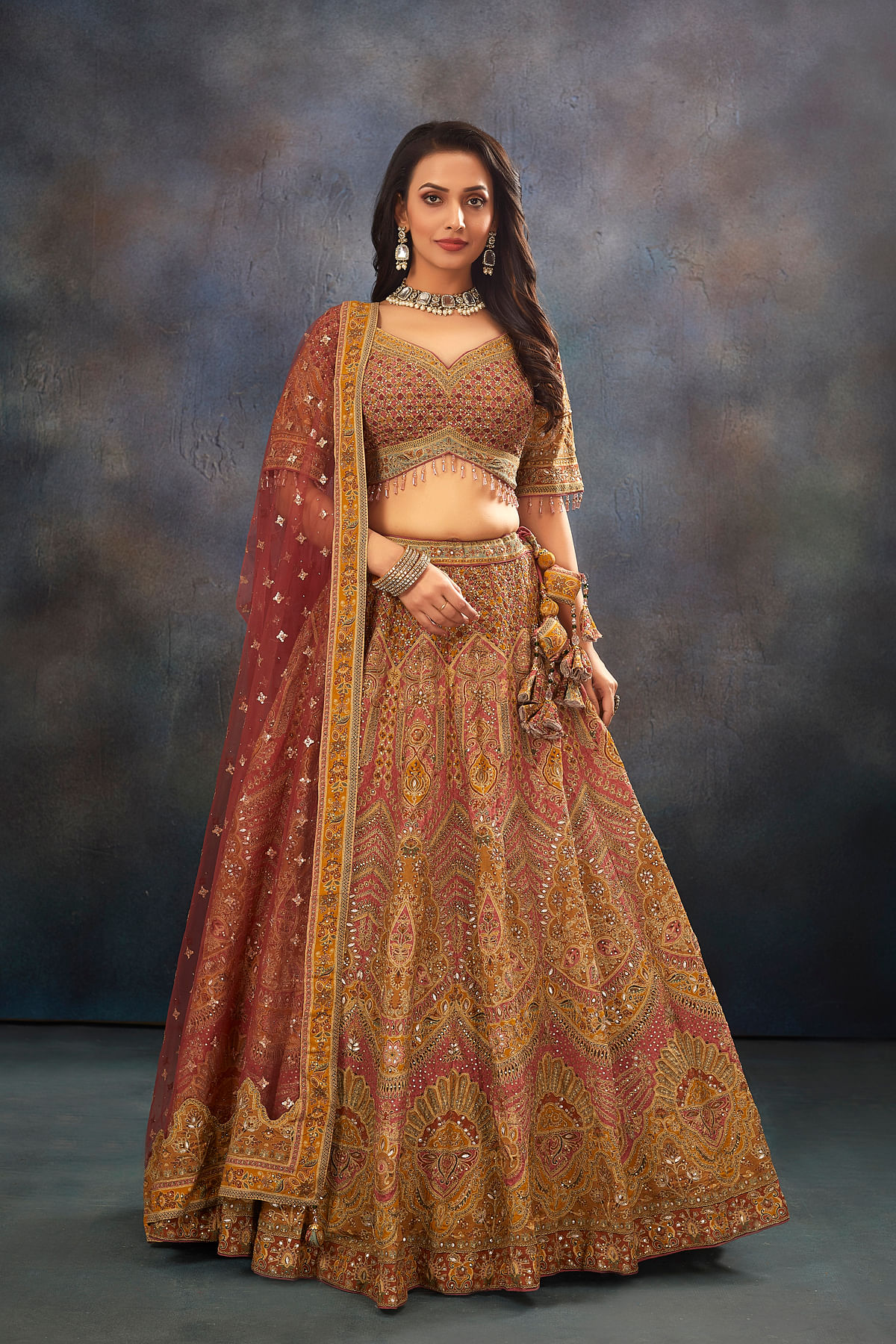 Mauve Pink Sequins Embroidered Silk Sangeet Lehenga-NH4118
Mauve Pink Sequins Embroidered Silk Sangeet Lehenga-NH4118
Makar Sankranti is a festival of colors, and this is reflected in the choice of lehenga colors. Vibrant hues such as mustard, turquoise, and emerald green dominate the designer festive lehenga palette. Intricate embellishments like mirror work, zari, and thread embroidery further elevate the festive vibe.
Salwar Suits for Women:
Comfort and Elegance:
 Smoky Grape Purple Bead Embroidered Crepe Party Wear Salwar Kameez-NH2399
Smoky Grape Purple Bead Embroidered Crepe Party Wear Salwar Kameez-NH2399
Salwar suits continue to be a popular choice for women during Makar Sankranti festivities. Known for their comfort and elegance, these outfits provide a perfect blend of tradition and modernity. Lightweight fabrics and vibrant colors make designer salwar suits ideal for both religious rituals and festive gatherings.
Variety in Designs: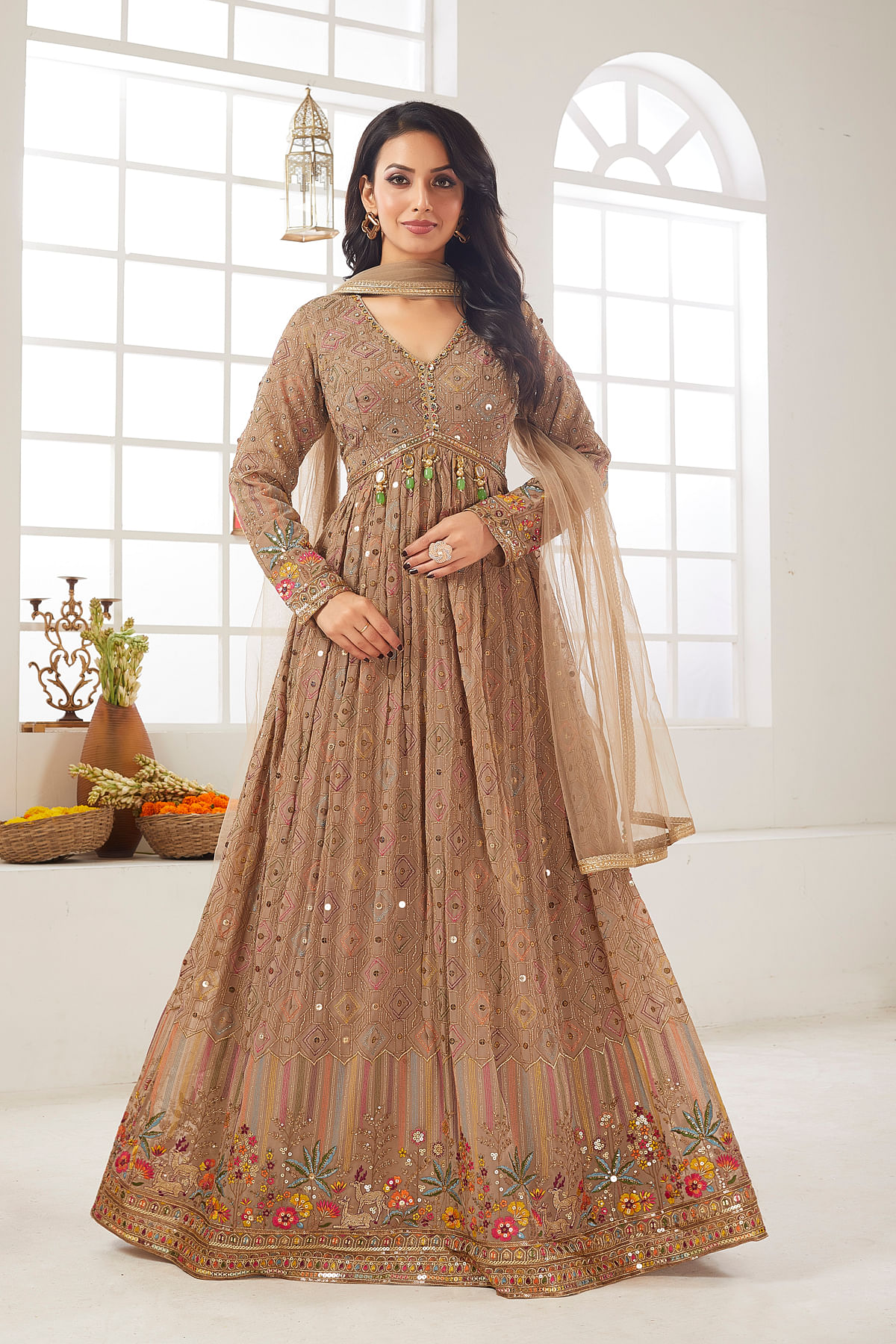 Zinc Grey Sequins Embroidered Georgette Festive Salwar Kameez-NG2926
Zinc Grey Sequins Embroidered Georgette Festive Salwar Kameez-NG2926
The versatility of festive salwar suits allows for a myriad of designs. From traditional Anarkali suits to contemporary straight-cut suits, designer sharara suit, designer palazzo suits, women can choose styles that suit their preferences. Embroidery, sequins, and mirror work add a festive touch, making salwar suits a go-to option for Makar Sankranti celebrations.
Fusion Styling:
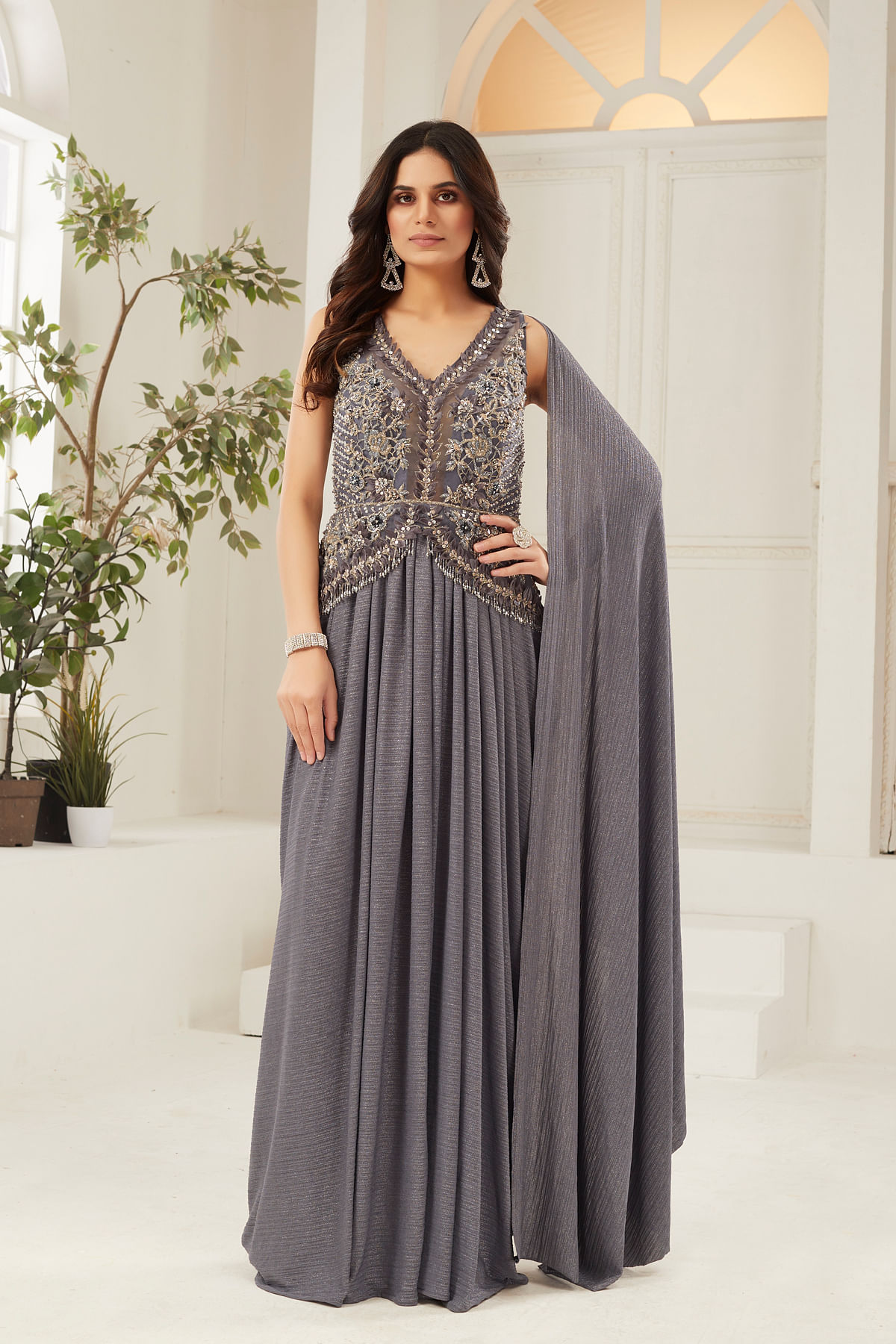 Titanium Grey Sequins Embroidered Organza Party Wear Salwar-NG5020
Titanium Grey Sequins Embroidered Organza Party Wear Salwar-NG5020
Embracing the trend of fusion fashion, women often pair their ethnic salwar suits with modern accessories. Statement earrings, embellished juttis, or even a contrasting dupatta can elevate the overall look, making it a perfect choice for those who want to experiment with traditional attire.
Men’s Kurta:
Classic Elegance:
Men’s kurtas remain a classic and timeless choice for Makar Sankranti. The simplicity and elegance of a well-fitted kurta, often paired with churidars or straight pants, make it an ideal traditional ensemble. Solid colors or subtle prints are preferred, allowing men to participate in the festivities with sophistication.
Experimentation with Silhouettes:
The evolution of men’s fashion has brought about experimentation with designer kurta outfits. Asymmetrical cuts, shorter or longer lengths, and various neck patterns provide men with the opportunity to showcase their personal style while adhering to traditional aesthetics.
Incorporating Handloom Fabrics:
Handloom fabrics like khaki and silk are gaining popularity in men’s kurtas. These fabrics not only contribute to the rich cultural heritage but also add a touch of luxury to the ensemble. Handwoven details and subtle embellishments enhance the overall appeal, making the kurta a standout choice. Samyakk offers wide range of Kahki Woven Tuxedo suit, Light khaki zaro woven silk kurta, Resham Embroidered Silk Waistcoat kurta, Silk Modi jacket and Multi-color Printed Silk Kurta.
Cultural Impact:
The fusion of Designer Printed Sarees, Party Wear Lehengas, Plus Size salwar kameez, and men’s party wear silk kurtas during Makar Sankranti harmonizes tradition and modernity, defining vibrant festive fashion. It reflects a broader socio-cultural shift towards embracing and celebrating diversity. The amalgamation of traditional attire with modern elements not only preserves cultural heritage but also allows for a dynamic and inclusive representation of Indian identity.
The revival of traditional designer outfits, handloom sarees, and ethnic embellishments in contemporary fashion promotes the preservation of cultural heritage. It encourages a sense of pride in one’s roots and contributes to the sustenance of indigenous craftsmanship.
The acceptance of diverse styles and the breaking of gender norms in fashion demonstrate a growing awareness and acceptance of inclusivity. Fashion is becoming a platform to express individuality, irrespective of gender or cultural background.
Conclusion-
As Makar Sankranti approaches, the convergence of tradition and style takes center stage, epitomized by the fusion of Sarees and Lehengas. This auspicious festival becomes a vibrant canvas for self-expression, where individuals across India showcase a unique blend of cultural richness and contemporary dynamism through their fashion choices.
In this celebratory atmosphere, Samyakk stands as a beacon of choice, offering an extensive collection that includes Kanchipuram sarees, Banarasi sarees, Designer sarees, organza sarees, and an array of lehengas – from Designer and party wear to Bridal lehengas. The brand’s commitment to providing enticing colors, diverse fabrics, and intricate embroideries aligns seamlessly with the festive spirit of Makar Sankranti.
As kites fill the skies, Samyakk invites individuals to soar to new heights of style and individuality, making Makar Sankranti not just a festival but a celebration of fashion, culture, and personal expression.
Wish you all readers a very prosperous makar sankranit from team samyakk.
Written by,
Shaloni Rao
Comments
Post a Comment